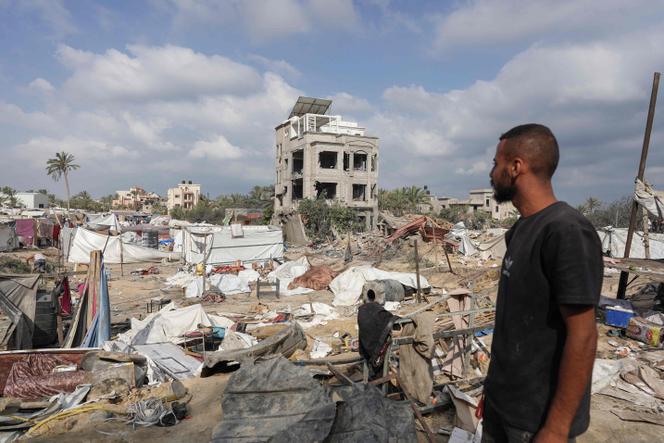


Hamas denied his death. Israel could not confirm it. On the morning of Monday, July 15, Mohammed Deif remained a ghost. On Saturday, for at least the ninth time in four decades, Israel targeted the head of Hamas's armed wing in a series of highly violent strikes on Gaza's southern coast.
In the heart of the Al-Mawasi region, defined by the Israeli army as a refuge for displaced Gazans, the strikes left at least 90 people dead, half of them women and children, and 300 wounded, according to the Hamas-run Gaza Ministry of Health – making them among the most lethal of the conflict. On Saturday, the Palestinian Civil Defense also reported that around 20 people were killed in a strike on the Al-Shati refugee camp in western Gaza City, hitting a place of prayer.
This immense human cost has gone almost unnoticed in Israel, however, in the 10th month of a war during which the army has shattered any notion of proportionality when it comes to strikes. One of the orchestrators of the October 7, 2023 attack was targeted alongside the Khan Yunis brigade leader Rafa Salama, whose death was confirmed by the army on Sunday.
Khalil al-Hayya, a senior Hamas official in exile, told Al-Jazeera that Deif was alive and well, although the movement did not provide any proof. The Israeli army said it had located the two men to the west of Khan Yunis, in a walled enclosure under the cover of trees that, it claimed, Hamas guards prevented displaced Palestinians from accessing.
Such a vast, relatively empty and enclosed space is a rarity in this area, where around 1.5 million people, according to the United Nations, are crammed into huge, dusty tented villages, subjected to unhygienic conditions, hunger and thirst. The attack took place near a rare drinking water and food distribution station.
According to army radio, Deif had taken refuge in the south of the enclave before the entry of Israeli troops at the end of October 2023. Since then, he has remained between his hometown Khan Yunis and Rafah, mostly underground, in the vast network of tunnels he had supervised the construction of for two decades. He and some of his fighters are now holed up there, following Israel's expected and unprecedentedly violent retaliation, abandoning two million Gazan civilians to their fate above ground.
Until April, the infantry had been deployed for months in Khan Yunis, positioning themselves a few hundred meters from the compound where they attempted to strike the head of the armed wing of Hamas on Saturday. According to army radio, Deif continued to supervise the operations of the Hamas brigades throughout the conflict, which explained his meeting with Salama on July 13. Only recently has he started to go out into the open, reportedly. In Gaza, very few people would recognize his face if he was in front of them.
You have 62.05% of this article left to read. The rest is for subscribers only.
